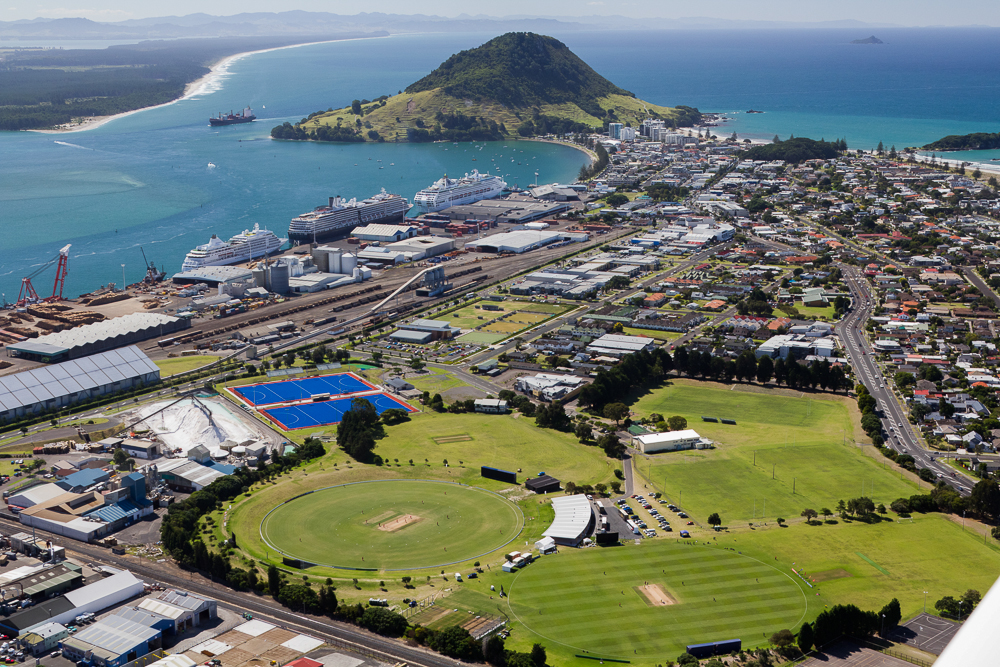Latest News

Source: Energy Efficiency & Conservation Authority – EECA
15 May 2024
Demand reduction and energy efficiency will be essential in lowering energy-related emissions in Bay of Plenty, new report highlights.
A new report, published today by EECA (the Energy Efficiency and Conservation Authority), shows the main opportunities in Bay of Plenty will be energy efficiency or demand-reduction-related projects as the region reduces its reliance on fossil fuels in the manufacturing sector.
These opportunities will complement the viable renewable energy source options of biomass, electrification, and geothermal within the region.
The Bay of Plenty Regional Energy Transition Accelerator (RETA) report provides insight and recommendations that will help streamline technology and infrastructure investments for local businesses and energy suppliers and cut carbon at the same time.
“The Bay of Plenty is unique from most other regions in that it has an abundance of geothermal and biomass resources,” said EECA Chief Executive Dr Marcos Pelenur.
“Economically it makes sense for local businesses to seriously explore the potential of geothermal as an energy source for industrial processing.”
“Bay of Plenty also has a large supply of forestry biofuel, and this residue represents a significant opportunity as the resource is developed for energy recovery or production.”
The region is also able to accommodate demand from fuel-switching projects with relatively low investment, when considered alongside Transpower’s and electricity distribution businesses’ (EDBs) future network plans in transmission and distribution. “Because of this, businesses are encouraged to explore electrification options with their EDB,” said Pelenur.
The Bay of Plenty RETA covers 28 sites which consume 15,000 TJ of energy and produce 281 kt of CO2 per annum. Most of the region’s energy-related emissions come from fossil gas.
“Unlike other regions of New Zealand, where emissions are dominated by agricultural emissions, the energy sector – including both transport energy and stationary energy – account for 52% of the region’s total emissions – highlighting the opportunity to decarbonise,” said Pelenur.
GNS Geothermal Resource Management Specialist Brian Carey said geothermal has a significant part to play not only in reducing emissions but in reducing required electrical infrastructure capacity upgrades, from the grid – both through the local transmission network and at the site level.
“For the process heat users we analysed for RETA, we found using geothermal heat energy significantly reduces their carbon emissions – by hundreds to thousands of tonnes CO2e per year, per user,” said Carey.
“The Bay of Plenty is richly endowed with geothermal, due not only to its high temperature geothermal systems, but also the widely available low and ambient temperature geothermal energy resources.
“Using geothermal heat pump (GSHP) technology reduces the requirement for infrastructure upgrades, while eliminating the reliance on fuel transportation and on-site storage. On a regional scale, the broader adoption of GSHP technologies can also be expected to contribute, alleviating load growth pressure on a regional electrical network.”
Bay of Connections Programme Manager Dean Howie said businesses and energy suppliers’ willingness to participate in the RETA process has played an important role and shows the appetite in the community for decarbonisation.
“The will is there, they just need the evidence, options, and guidance to make the right decisions for their business and to contribute to emissions reductions. Reports like this one are an important step in this process,” said Howie.
Sustainability Lead at Priority One, the Western Bay of Plenty’s economic development organisation, Marissa Nikora said collaborative efforts like the RETA programme and further research will be key to unlocking these opportunities for local businesses and industries.
“Our region currently relies heavily on gas for process heat, but we anticipate supply challenges within the next 10-20 years – adding pressure to decarbonise. EECA’s report reveals exciting renewable energy prospects, including biomass, geothermal, and electricity,” Nikora said.
This Bay of Plenty RETA report is the culmination of the planning phase of the RETA programme. It provides the region’s energy users and suppliers with information and tools for developing and implementing their own energy transition plan.
Ends
Note to Editors
Process heat is the energy used as heat mainly by the industrial and commercial sectors for industrial processes, manufacturing, and warming spaces. Some process heat emissions can be reduced by redesigning the underlying processes, but decarbonising the remaining heat demand will require switching from fossil fuels to low-emission fuels, such as wood fuels in boilers or electricity in electric boilers or heat pumps.
The report includes input from Bay of Connections and Priority One, the Regional Economic Development agencies, Transpower, Horizon Energy, Powerco and Unison Networks, GNS Science, local biomass suppliers and forest owners, electricity generators and retailers, and medium to large industrial energy users.
Media contact
Felicity Rookes
Senior Communications Advisor
0279610051
